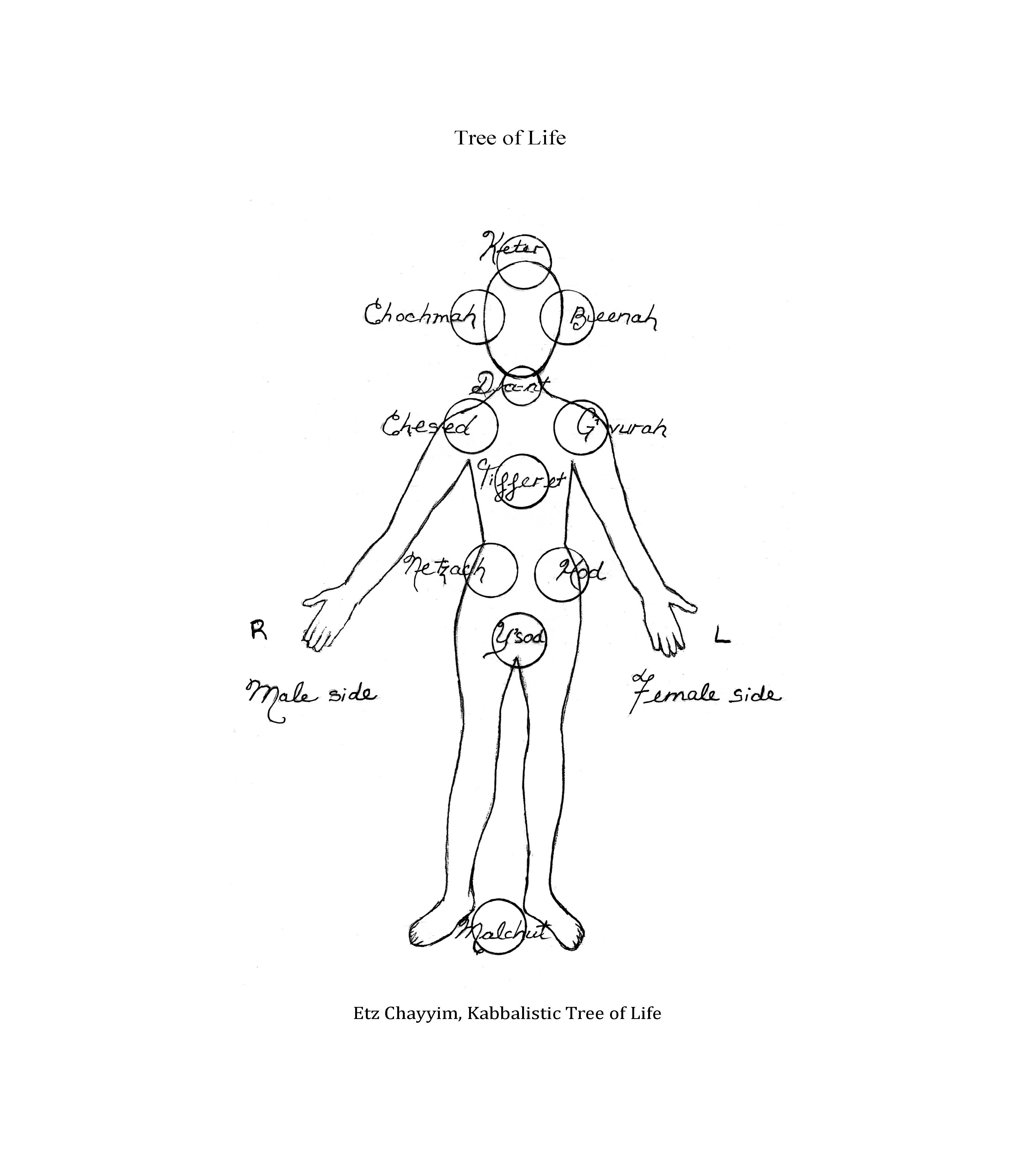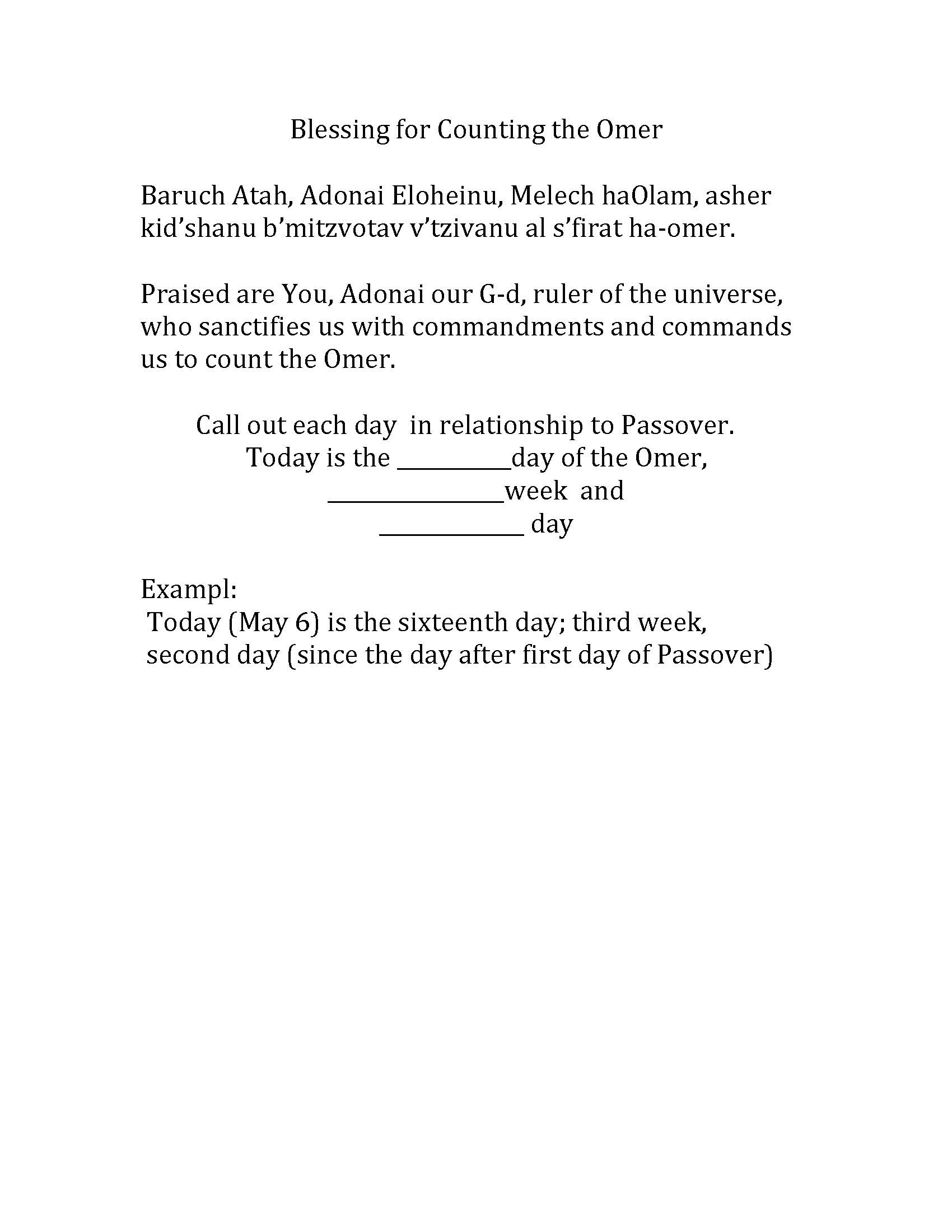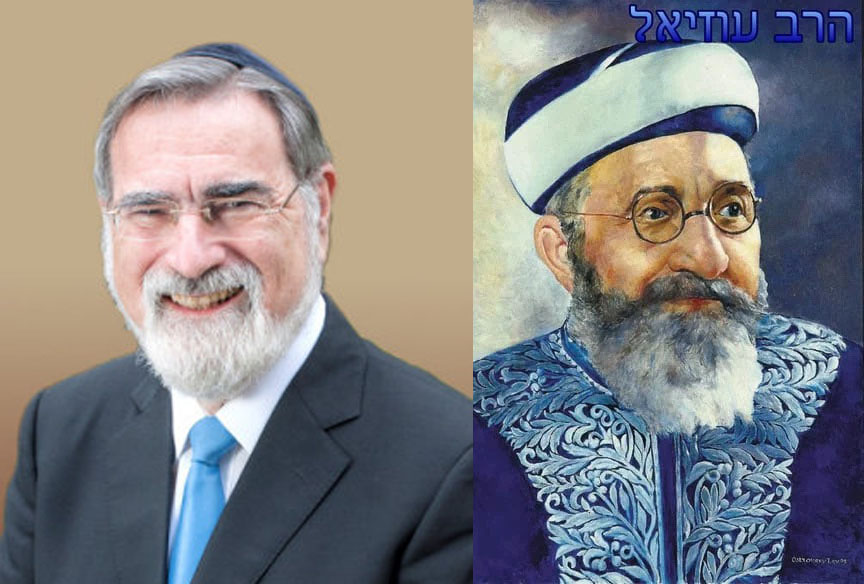
Seven is a special number in Judaism. It represents creation and wholeness. It is a recurring number in physicality that reflects completeness and creative expression. There are seven colors in the rainbow, seven notes in the scale (think octave), seven circles made by the bride and groom (egalitarian approach) in front of the Chuppah (the wedding canopy), seven blessings in the marriage ceremony, seven cups of oil on the original menorah (for the travelling sanctuary, Mishkan, as well as in the Temple in Jerusalem), and of course seven days in the week, six days of creation and the seventh, a fulfillment and completion of the whole process with Shabbat, a sanctification of time
Passover, a seven-day holiday, (eight outside of Israel) is another reminder of this powerful number, “Seven days, leaven may not be found in your houses…” In fact right after the first day of Passover, the Holy day, the Torah tells us to count seven again; “seven weeks…until the morrow of the seventh week you shall count, fifty days and you shall offer a new meal-offering to HaShem.” Count seven times seven, since each week has seven days, for a total of forty-nine days. Passover with all of its rituals, foods and spiritual meaning is leading us to something else, the fiftieth day, Shavuot, the holiday commemorating the giving of Torah. People meet in their synagogues ready to receive, Torah, once again, an ongoing and repetitive expression of acceptance and commitment.
The original concept of counting was marking the barley harvest culminating weeks later in the wheat harvest. The Chassidic literature sees barley as the poor man’s food representing our animal instinct while wheat reflects rich man’s food representing our higher faculty of wisdom, insight, and spirituality. Rebbe Nachman viewed the years of slavery as bringing the Israelites down to the lowest level of depravity so that leaving Egypt and going to Sinai was a process of purification. In order to receive Torah and the Ten Commandments each of the freed slaves had to shed their animal nature and be brought up to a higher level of humanity. Counting 49 days was going through an elevated journey of refinement.
Our agricultural connections are long gone but the rabbis, in their wisdom and psychological understanding renewed our ancient rituals. They specified a different kind of counting, creating a process that would be relevant for all times. Using either the Kabbalistic notion of the human as an Etz Chayyim, a Tree of Life, (see below) or the Mussar approach of examining one’s ethical and moral behavior and beliefs, they provided a different focus of counting which would help to refine and elevate our character. Even if you don’t wish to use Kabbalah or Mussar, it is an opportunity to take a few moments of each day to do inner work, exploring the inner kernel of our souls, through study, meditation, prayer, or even honest conversations with those we trust. Understand that the three-letter root for counting is SaPhaR, also the root of the words to ‘communicate’ and ‘story,’ as well as ‘shining’ or ‘brilliance’ (think Sapphire). So counting is a system of communicating with our selves, our own story, the ever evolving expression of our values, our goals, successes and failures, a way to shine a light on our authentic selves.
We count in the evening, because the Jewish day begins at night. So before we go to sleep we have an opportunity to delve into a deeper understanding of our selves, looking at possible scenarios from the day; perhaps untangling a poor communication with a friend or colleague; examining if we expressed care or love or were we overly critical with someone we care about; becoming aware of the level of expectations we lay upon ourselves or others; are we accomplishing the tasks we dream about; do we feel a sense of entitlement, expressing arrogance in the world or do we need to tap into humility and gratitude?
As I have taught previously, the Jewish calendar is an opportunity to dig deep and focus our energies on self-improvement and personal growth, all the while cultivating a deeper connection with the Divine. Below are some charts that may help if you want to follow a daily routine based on the Kabbalistic Etz Chayyim. The human body, as you can see, has ten areas, called Sefirot, attributes which are emanations of the Divine expressed through our thoughts, feelings, and behavior. Our emotional life and actions are fulfilled through our dreams, our goals, our relationships, and our work in the world. Each week is an opportunity to focus on our progress by looking at the lower seven Sefirot. Each week we look at one of them and each day of the week we connect them to the other aspects, all of which are contained within. Looking intensely at a major area of behavior, and expressed or unexpressed values, our goal is to expand our understanding of our selves and continue to build character. Using the chart below, follow this guide ato examine your self, each day, until Shavuot, the evening of June 8.
- The first week, which begins the second night Passover, is Chesed meaning loving -kindness. Each day we connect love, compassion, and kindness connecting to one of the seven. So day one Chesed through Chesed, an intense examination of how much do we love, how effortlessly or perhaps beyond what is healthy. Maybe this area of our life is stuck and not free-flowing, or perhaps we must find place of generosity that is stifled.
- Day two is Chesed through the lens of Gevurah, which represents boundaries and limit setting. Do we both give and receive love in a balanced way or are we judgmental, harsh or withholding or does our outpouring far exceed what we receive? Perhaps it is too possessive or suffocating?
- Day three is Chesed through the lens of Tifferet. Do we give and receive in a balanced way. Do we take care of others at the expense of our own needs or is our life completely absorbed and self-centered, neglecting the needs of others. Are we in harmony mind, body and spirit?
- Day four is Chesed through the lens Netzach, the place of action. Do we express our loving kindness through giving, volunteering, generosity, and in persevering f the world? Are our actions consistent with our values?
- Day five is Chesed through the lens Hod, the place of humility and empathy. Do we identify with others, do we hold and have room for what others need despite our own stresses and challenges in life.
- Day six is Chesed through the lens of Y’sod. Y’sod represents connection with others, intimacy and relationship. Are our relationships thriving or stagnating? Are we sharing love, kindness, good listening or limited, stingy, and uncompromising?
- Day seven is Chesed through the lens of Malchut, the imminent presence of the Divine we call Shechinah. At our feet we make contact with the world and this is where we stand and what we stand for. Do we live out the presence of godliness with others, reflecting our ethics and morality in our actions and contact with others? Do we tap into our G-d spark and be our truest, best selves?
- Week two focused on Gevurot with each day, again, through the lens of the seven, completing each Sefirah through the seven weeks.
This is a complex system that demands close attention. Not necessarily easy at first, but it can be very rewarding. Take a few moments each evening to look at your self using the Kabbalistic system and its complex but rich vision of the human being. I recommend the following books that are wonderful guides for Omer work – “Counting the Omer” by Rabbi Min Kantrowitz, “Spiritual Guide to Counting the Omer” by Rabbi Simon Jacobson, “Counting The Omer” by Rabbi Karyn D. Kedar, as well two books of poetry specifically for counting, “Toward Sinai” by Rabbi Rachel Barenblat and “This is The Day” by Rabbi Diane Elliot, all available on Amazon.
Join me on the journey – counting to bring more meaning to your days and making each and every day count.
























 More news and opinions than at a Shabbat dinner, right in your inbox.
More news and opinions than at a Shabbat dinner, right in your inbox.